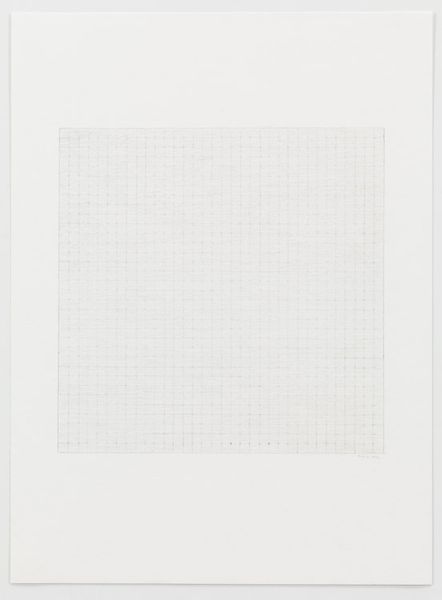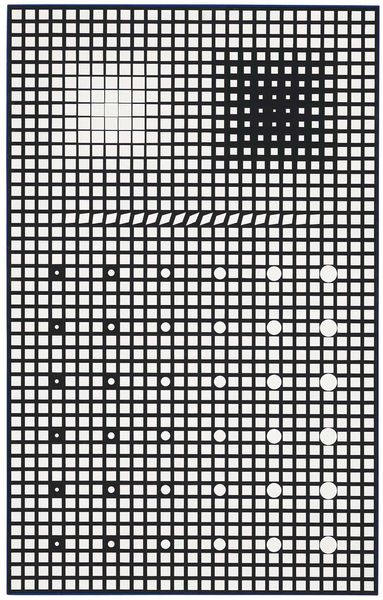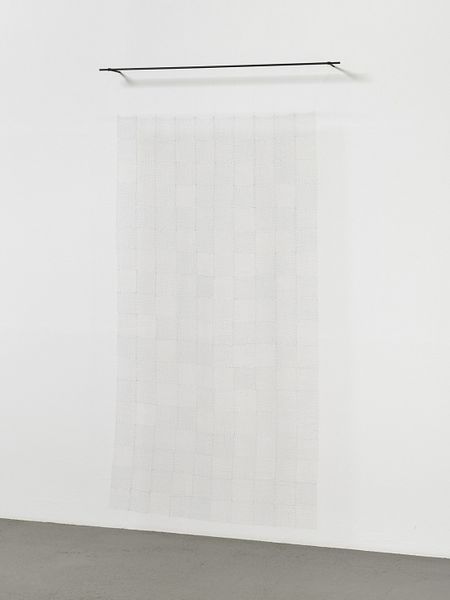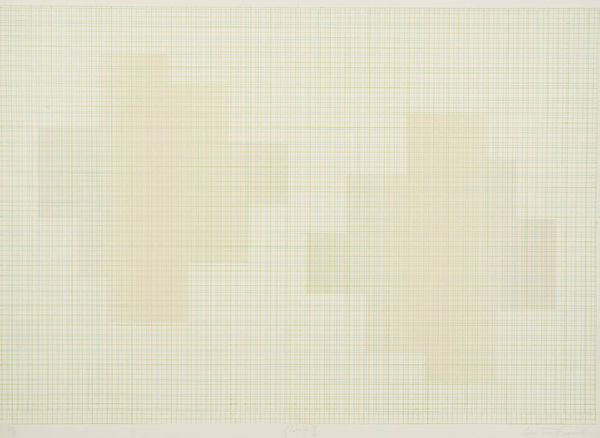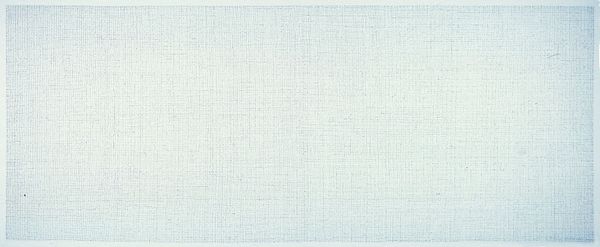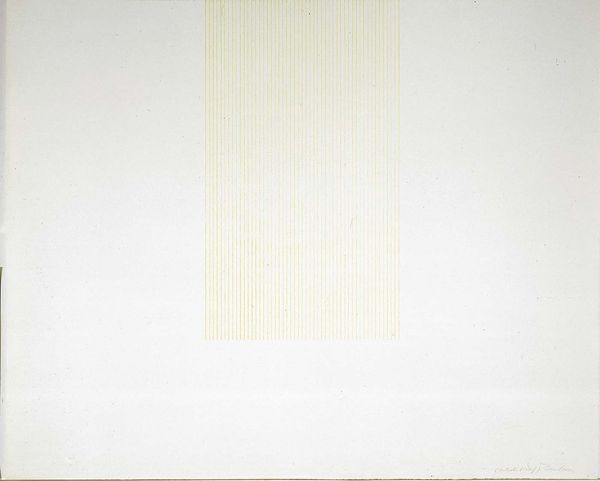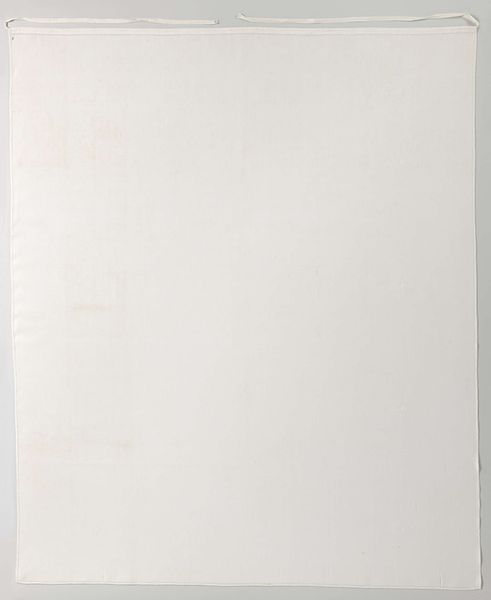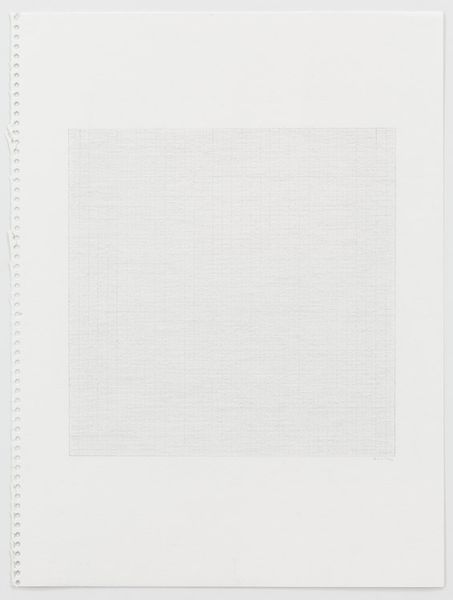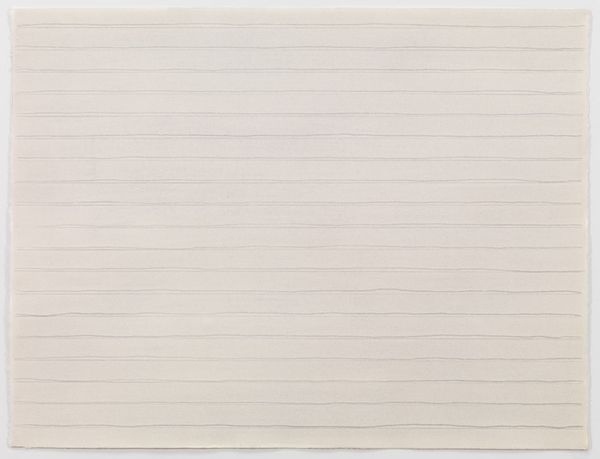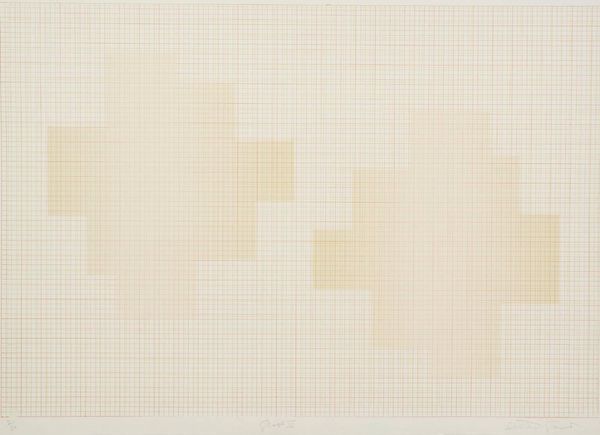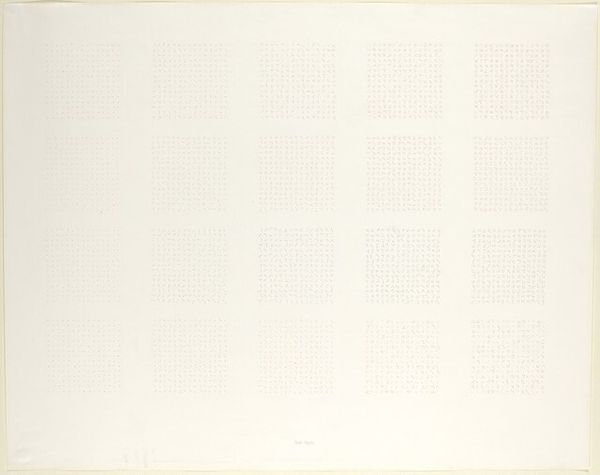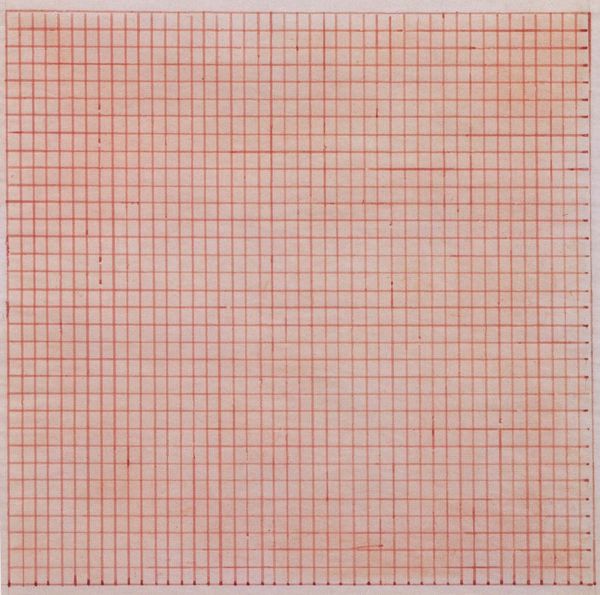
drawing, graphite
#
drawing
#
non-objective-art
#
minimalism
#
geometric
#
geometric-abstraction
#
line
#
graphite
Copyright: Brice Marden,Fair Use
Curator: I find myself calmed by this understated piece. It's deceptively simple, but it resonates with me. Editor: Brice Marden's "Untitled" drawing from 1973—at first glance, it looks like a minimalist grid rendered in graphite. But there’s so much more to unpack here when thinking of it being made in the 70s. Curator: Indeed. The graphite lines create this perfect geometric field. It's reminiscent of Agnes Martin's work, focusing purely on line and form. Editor: The grid as an artistic choice, by this period, becomes intertwined with societal structures and the rigidity of industrialization. This framework imposed a kind of systematic order, almost oppressive, onto the artistic landscape. Curator: I would say it is meditative, no matter when you’re viewing it. The slightly imperfect lines, the subtle variations in tone...it reveals the artist's hand, even within such a structured composition. Marden finds nuance and beauty within constraints. Editor: Those variations and imperfections are where I find the entry point to consider the drawing resisting the grid, disrupting its uniformity—much like resistance to systems of power. Curator: That may be true, yet for me it explores repetition and subtle variations within a restricted visual language. It almost has a musical quality of rhythm and pause. Editor: Exactly, pause. The act of drawing the grid is like a performative act—a testament to time, labor, and the very physical constraints of making. Curator: And that performance is quite beautiful in its quiet intensity. Editor: Right—it speaks volumes about the socio-political climate, the artistic rebellions that were shaping the art world and broader cultural narratives. Curator: In the end, both are important perspectives, considering the object as pure form or social object. Thank you for revealing an insight into its significance for us. Editor: Thank you. By examining this work we learn more about where we come from.
Comments
No comments
Be the first to comment and join the conversation on the ultimate creative platform.
